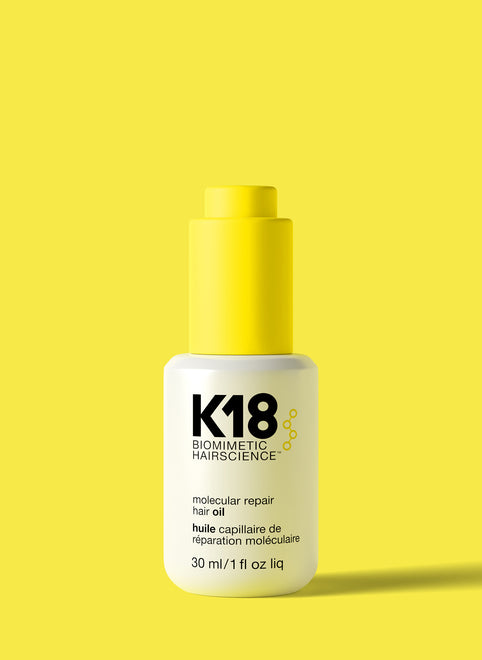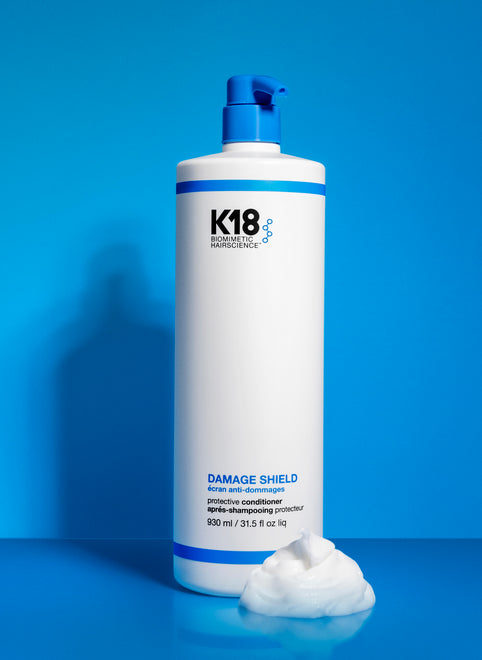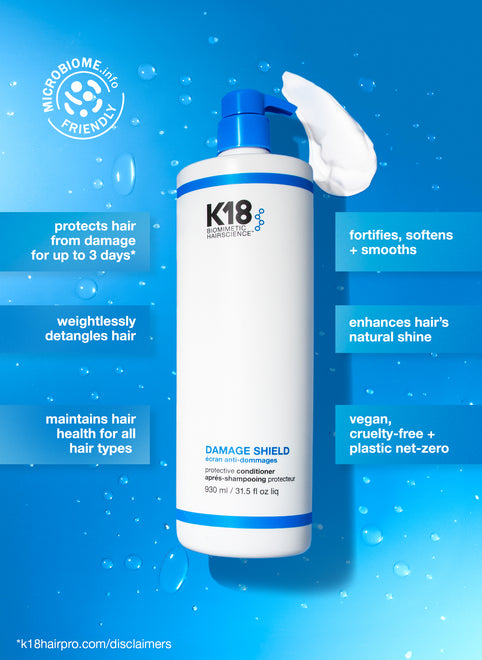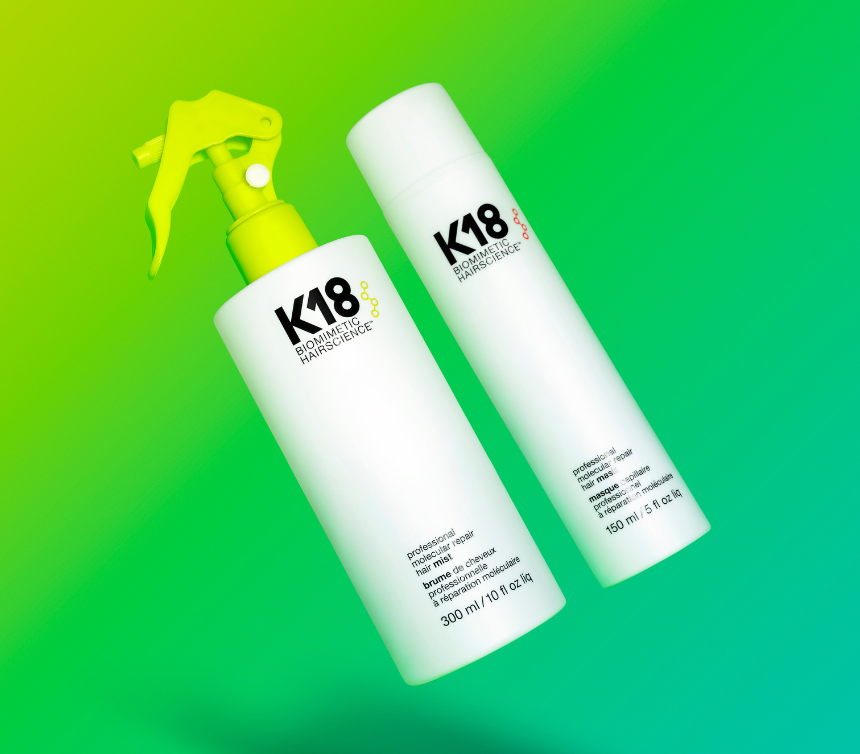Whether you color, process, or style your hair—or not—you’ve likely encountered split ends at some point. This common concern, also known as trichoptilosis or "dead ends," is a hair condition where the ends of the hair shaft split or fray into multiple strands.
Split ends can cause hair to feel dry, brittle, or uneven, and the frazzled cuticles reflect less light, causing hair to appear dull.
So what can we do about split ends and breakage? And is it possible to prevent and fix them without trimming?
Today, we’re exploring the different culprits that cause split ends—plus what can be done about them (hint: it involves biotech!) for smoother, healthier hair that lasts.
what causes split ends?
The short answer: anything that damages the hair can cause split ends.
This includes lightener, chemical services, and frequent heat styling—but that’s not all. Split ends can also form from environmental aggressors like sun exposure and harsh weather conditions, as well as daily mechanical stress like brushing and styling.
“Your ends—the oldest part of your hair—are the most damaged part because they’ve had the most exposure to damaging elements on a daily basis,” explains Fraser Bell, Head of Advanced Research at K18. “It’s damage deep down inside the hair caused by these elements that ultimately leads to breakage and the formation of split ends over time.”
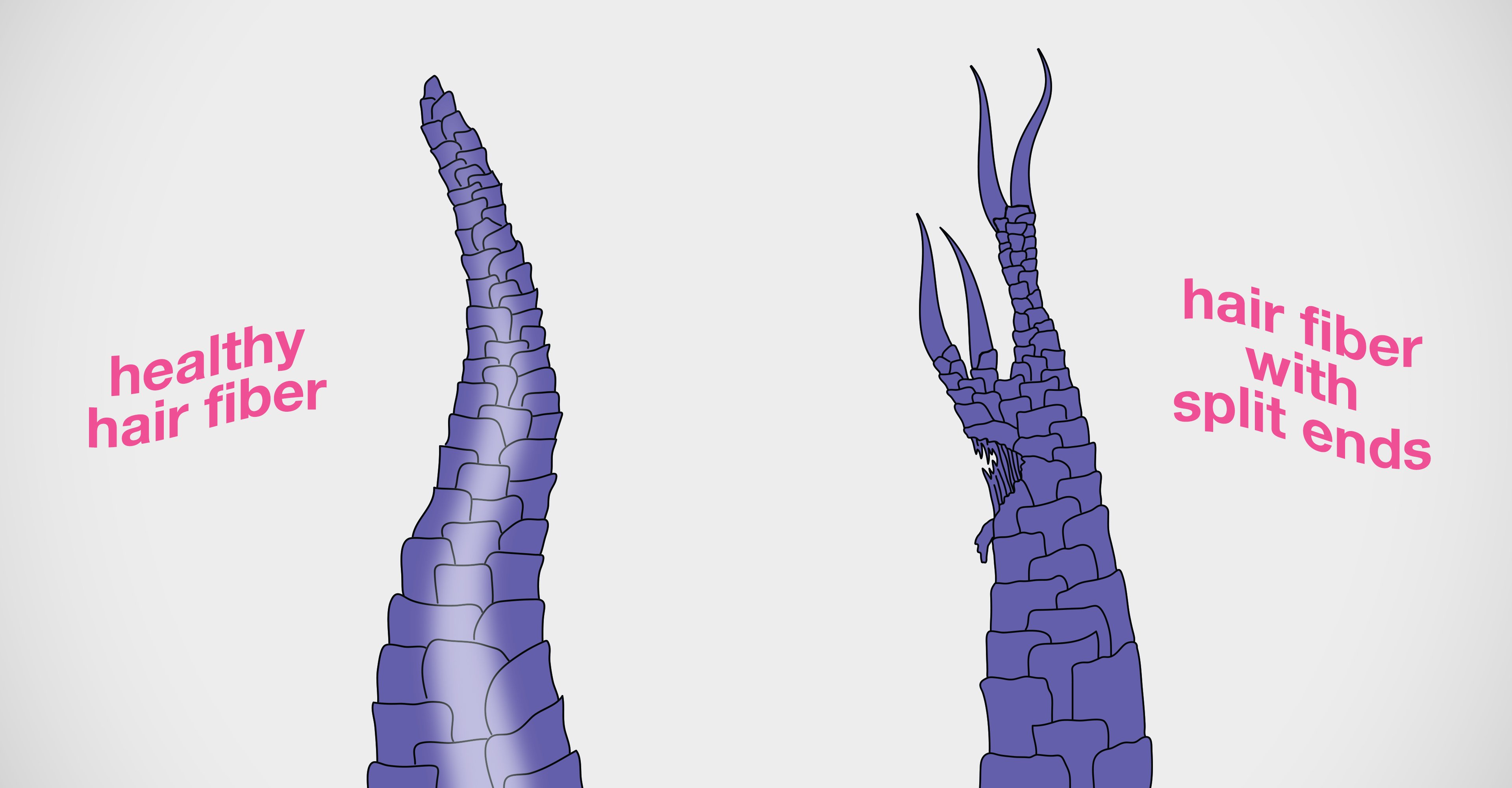
Scientifically speaking, consistent daily damage wreaks havoc on the cortex, which is the middle section of the hair shaft situated between the cuticle layer and the innermost layer of your hair.
“This accumulation of damage progressively acts upon the cortex structure, fatiguing and weakening the hair, which then develops weak spots and cracks along its length that eventually lead to breakage,” says Bell. “This can lead to shorter, broken hair fibers that stick out, disrupting the look of your style, or fibers where the tips are damaged in a way that creates long splits along their length, commonly known as split ends.”
What’s more, these issues can worsen when the outer cuticle is also compromised by the aforementioned factors, says Bell. As the cuticle gets stripped away over time, it eventually exposes the cortex, leaving the inside of the hair even more vulnerable to damage. In other words, it’s a vicious cycle.
can split ends actually be repaired?
Apart from snipping off your split ends, the key to solving split ends is prevention.
“The best way to reduce split ends is to stop them from happening in the first place,” says Bell. “The goal is to reverse the damage that causes frizz, dullness, and split ends by reconnecting polypeptide chains and disulfide bonds that get broken during bleaching, color + chemical services, and heat*.”
That’s where K18’s clinically proven K18PEPTIDE™ comes in.
how to prevent split ends
K18’s award-winning leave-in molecular repair hair mask is the first step to preventing split ends. Our patented biotech-powered peptide repairs hair in 4 minutes* while fortifying against future damage.
The next step to proactively addressing split ends is to add our molecular repair hair oil, also powered by K18PEPTIDE™, into your routine to help prevent damage with heat protection while improving the appearance of split ends and frizz immediately.
“Our hair oil smooths and fights frizz [and split ends] by repairing damage on the inside so your hair can look its best on the outside,” explains Bell. In fact, the highly concentrated formula is clinically proven to reverse split ends by 78% after just one use*.
This simple two-step process is the key to solving split ends once and for all—especially if you’re hoping to do so without cutting your hair.
“Both of these formulas can help to close and repair split ends that have developed in the hair with K18PEPTIDE™,” says Bell. “The biomimetic peptide fits seamlessly into your hair’s keratin structure, repairing hair from the inside-out and treating the damage that causes frizz and split ends.”
Between mask days, we recommend fending off daily damage that can lead to split ends with a color-safe, protective shampoo + conditioner.
Ready to solve split ends once and for all? Build your molecular repair routine today.


.png?v=1706135824299&transform=resize=150x150)
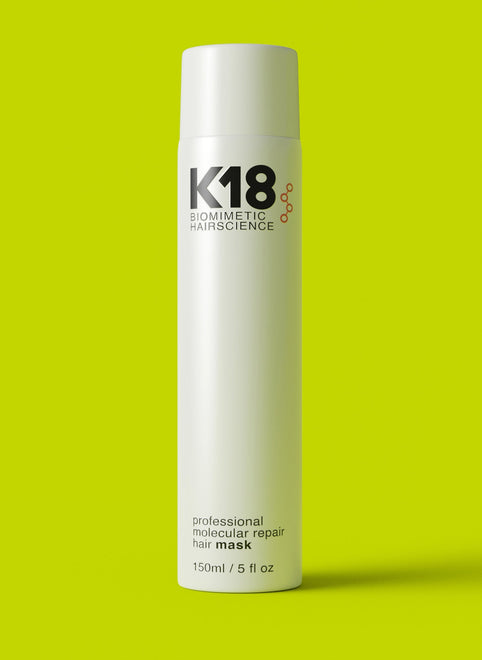

.png?v=1695413339252&transform=resize=150x150)
